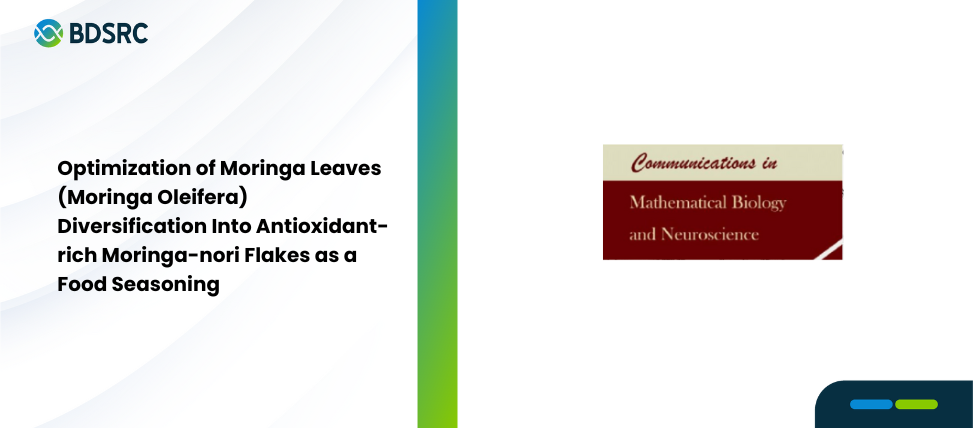Optimization of Moringa Leaves (Moringa Oleifera) Diversification Into Antioxidant-rich Moringa-nori Flakes as a Food Seasoning

This research focuses on optimizing antioxidant-rich Moringa flakes by fine-tuning blanching temperatures and nori content, which are key factors influencing the sensory qualities, antioxidant levels, and sodium content of the final product. Moringa leaves, recognized for their high nutritional value and antioxidant potential, were combined with different concentrations of nori to evaluate their impact on these characteristics. The study employed a factorial design with blanching temperatures of 70°C, 80°C, and 90°C, along with nori levels of 5%, 10%, and 15%, to identify the optimal conditions for creating a nutritionally superior and consumer-friendly food product. Statistical analysis was conducted using t-tests, two-way ANOVA, and Tukey post hoc tests to assess the significance of blanching temperature and nori content on antioxidant activity. The findings revealed that both factors significantly influenced 2 BIMANTIO, WIDYASAPUTRA, NGATIRAH, WADJONG, SUPARYANTO, PARDAMEAN the outcomes. Antioxidant activity was best preserved at a blanching temperature of 70°C, as higher temperatures caused degradation of heat-sensitive antioxidants. The optimal antioxidant activity was observed with a 10% nori content. The study concludes that carefully balancing blanching temperature and nori content is crucial for producing Moringa flakes that are rich in antioxidants. These findings offer valuable guidance for food product developers seeking to create health-oriented products with enhanced antioxidant properties, highlighting the importance of precise control over processing parameters. The successful creation of antioxidant-rich Moringa flakes underscores their potential in the health food market, offering a blend of nutritional benefits and consumer appeal.
Authors:
Mohammad Prasanto Bimantio, Reza Widyasaputra, Ngatirah, Sebastianuscharmie Wadjong, Teddy Suparyanto, Bens Pardamean
Communications in Mathematical Biology and Neuroscience
